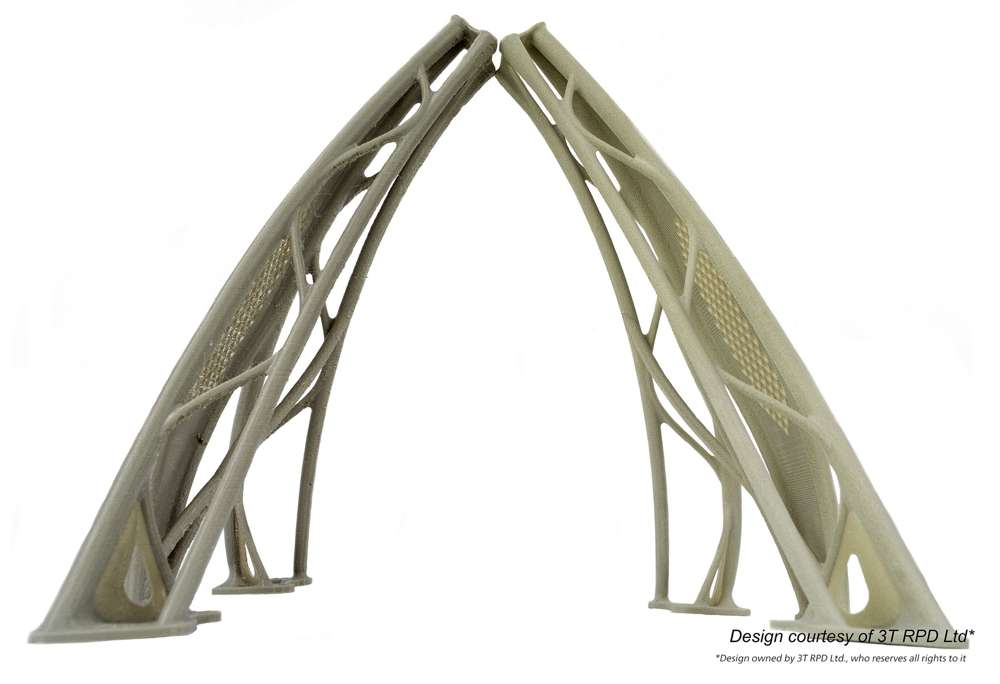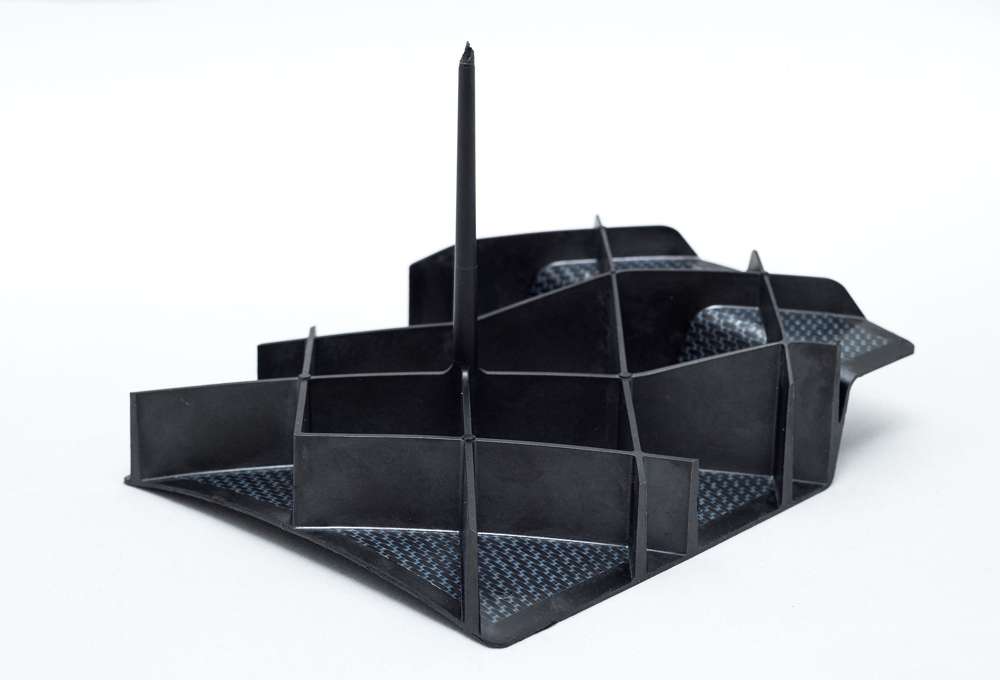PEEK at 40

As PEEK comes of age, the high-performance polymer offers huge potential for the aerospace sector. That aircraft must inevitably be made of metal is a myth hard to dispel, but PEEK-based composites are dispelling it fast!
In 1978, ICI invented PEEK (polyetheretherketone), a member of the PAEK (polyaryletherketone) family of high-performance polymers. PEEK was soon recognised as a new polymer of enormous potential, and its commercialisation was then undertaken by Victrex. Today, more than 20,000 aircraft rely on VICTREX PAEK and PEEK based solutions, e.g. for thermal acoustic blankets, brackets or pipes.
Airbus, for example, has used the thermoplastic for a primary structural component in the door of the A350 XWB to improve quality and reduce weight and costs by 40%. COMAC is using VICTREX PIPES instead of metal pipes to protect high-voltage cables in its first commercial aircraft, the C919. On the 40th anniversary of PEEK's creation, the relatively young thermoplastic is being increasingly deployed in aerospace-related thermoplastic composite solutions.
The aircraft industry has forecast that approximately 41,000 new and replacement planes will be required by 2035. Meeting this kind of escalating demand clearly calls for new approaches and new technologies, and as a consequence, thermoplastic composites are expected to play an increasingly important role in accelerating future aircraft construction.
Thermoplastic composites offer multiple advantages, including very short production times and low overall costs, compared to their thermoset counterparts, which today are in frequent use. A typical VICTREX AE 250 thermoplastic composite part such as a structural bracket can reduce manufacturing time by 20-30% compared to metals or other polymer materials and it can reduce costs by up to 40% compared to machined metals.
The combination of an innovative VICTREX PAEK polymer and reinforcing carbon fibres offers mechanical properties that are consistent with the requirements for structural aerospace applications, and VICTREX AE 250 thermoplastic composite solutions demonstrate how PAEK thermoplastic polymers continue to be an active source of innovation – 40 years after the invention of PEEK.
PAEK processing benefits
Composites based on traditional PAEK polymers, such as PEEK and related polymers, need to be processed at temperatures in the range of 360°C-400°C. In contrast the VICTREX AE 250 composites have a melting temperature of 305°C and can be processed at between 340°C-360°C, allowing composite parts to be manufactured faster and more cheaply, using fast automated lay-up, out of autoclave processing, hot stamping and injection over-moulding – to also deliver added functionality.

VICTREX AE 250 unidirectional prepreg tape is compatible with a range of lay-up and consolidation techniques, including automated fibre placement (AFP), and oven and press consolidation.
This innovative approach can deliver weight savings of up to 60% over conventional metallic solutions, contributing to cuts in fuel consumption and thus emissions, delivering both cost and environmental benefits, while offering continuous manufacturing processes and cycle times measured in minutes rather than hours for thermoset alternatives.
Specifically, composites made from Victrex high-performance thermoplastics are up to 60% lighter than AISI 4130 steel, a tough chromium-nickel-molybdenum alloy widely used in aviation applications. They can also achieve substantial weight advantages over lightweight metals, including TA6V titanium, 7075-T6 aluminium or ZK60A-T5 magnesium. The high-performance composites are not only lighter than these metals, they also outperform them. For example, the specific strength of the composites is five times that of AISI 4130 steel.
Tailor-made components
Especially designed for the aerospace industry, VICTREX AE 250 composites enable the production of continuously-reinforced components that can be designed to meet specific load requirements while reducing weight. Components manufactured in this way include brackets, clamps, clips and housings used throughout the aircraft in primary and secondary structures, from the cabin to the engines and fuel tank.
Victrex has not only developed a new PAEK-based polymer, but also an innovative hybrid-moulding technology that allows engineers to overmould a PAEK-based composite with fibre-reinforced PEEK injection-moulding materials. This hybrid moulding process offers several major advantages, including improved cycle times, lower energy requirements, and the elimination of scrap and secondary operations. These factors help to reduce total system cost.
Using the new hybrid moulding process, Victrex and Tri-Mack Plastics Manufacturing Corporation have, for example, engineered an aerospace bracket, using this new technique, to meet the demanding performance requirements of loaded applications.
Victrex and Tri-Mack have now gone on to establish a joint venture, TxV Aero Composites, to accelerate the commercial adoption of PAEK composite applications within the aerospace industry, through the manufacture of parts utilising new and innovative processes. This multi-million-dollar investment includes the establishment of a new US-based manufacturing facility. The new company will be a total solutions provider for PAEK composites, from concept development through to commercialisation. On the occasion of PEEK's 40th anniversary, this JV is a confident, forward-facing tribute to this remarkable and versatile material.
Together with a broader representation across the aerospace industry, Victrex is also actively participating in a hybrid overmoulding development project with the Thermoplastic Composite Research Centre (TPRC), Enschede, Netherlands, creating parts that demonstrate the fundamental relationships between materials and processing.
Additive manufacturing arrives
Additive Manufacturing (AM) is considered a key productivity tool of the future. Given the need for accelerated manufacturing techniques, if demand for new aircraft is to be met over the two decades, AM could well be a game-changer for the aerospace sector. It's probably too early to make lofty predictions, but the materials and technology to support AM continue to emerge, including the first PAEK polymers designed, developed and optimised specifically for AM.

The development of these new PAEK polymers for AM is being driven forward by a strategic partnership between the University of Exeter and Victrex, with the goal of not only introducing next-generation PAEK polymers and composites, but also improving the underlying AM processes. This new alliance between the Centre for Additive Layer Manufacturing (CALM), at Exeter University, and Victrex R&D will focus on multiple AM technologies.
Progress is underway. After having achieved major improvements, Victrex recently announced two new developments in additive manufacturing: a high-strength PAEK polymer for laser sintering (LS), and a filament with better Z-strength than existing PAEK materials and better printability for filament fusion (FF).
Improved technologies for additive manufacturing of VICTREX PAEK can open up a range of possibilities for design engineers. Potential benefits of using PAEK polymer for AM could include: Greater design freedom for engineers looking to deploy AM in high-performance applications in a variety of industries; Higher-performance AM solutions, enabling the production of highly complex, highly customised, and highly specialised PAEK components; Digital design and fabrication of PAEK parts for rapid prototyping and a speedier time to market; Improved economics through elimination of machining waste, improved refresh rates in powder bed fusion (PBF), and improved material utilisation in filament fusion (FF).
In the aerospace sector, we can conclude, the use of PAEK/PEEK in AM has the potential to enable new designs and the consolidation of parts within a single design.












